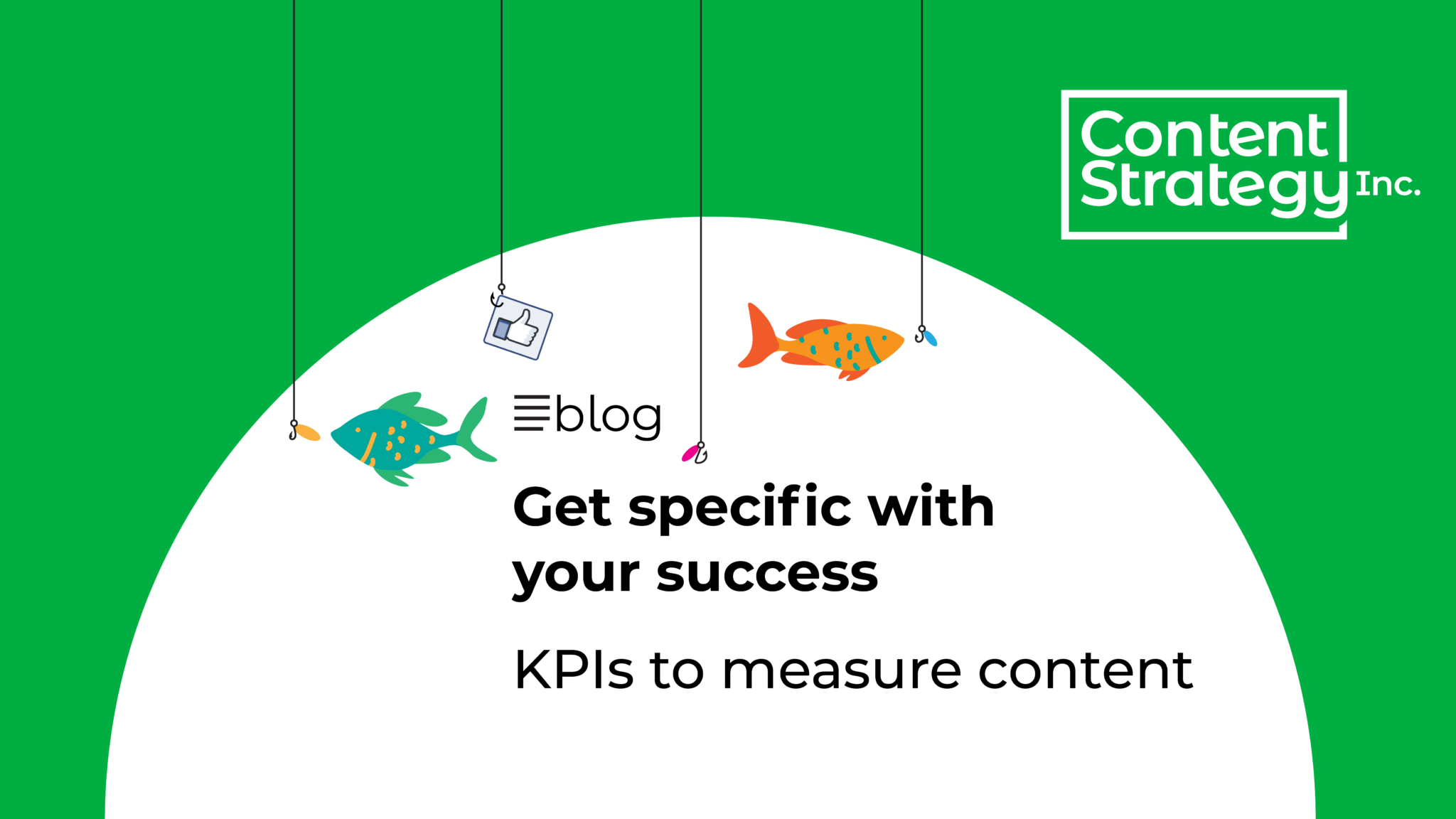Take the next step in measuring your content
Updated on: September 5, 2023
We’ve previously talked about four meaningful ways to measure content:
- Content success
- User experience
- Content quality
- Content governance
Defining success metrics falls under the strategize and ideate stage of content lifecycle, and that your content strategy working group can discuss and define them together.
Here we’ll dig a little deeper and talk about defining key performance indicators (KPIs) for each area of measurement.
Key Performance Indicators
KPIs are the basic measurement of success. They should be stated explicitly in numerical, measurable metrics within a time frame. Each KPI should be assigned to a specific person to ensure that content success gets measured and communicated.
Here are some examples to get you thinking about measuring your content with KPIs.
Content success
Basic traffic metrics such as page views can be useful measures of webpages, but they can’t control for page design. The most useful KPIs for content success are based on a combination of analytics and offline research.
KPI: Reduce calls to the call centre by 5%.
Method of evaluation: Numbers from call centre
Why: Indicates improvement in your audience finding the information they need online.
KPI: Increase percentage of completed transactions after visits to transactional areas of the site by 10%.
Method of evaluation: Web analytics
Why: Shows customers are able to use the website to initiate and complete tasks.
KPI: Users can accurately predict what they’ll find on a page after scanning page content for 5 seconds 80% of the time.
Method of evaluation: User testing
Why: Shows headings and visual cues are descriptive and effective, and support users in finding the right content for their needs.
KPI: Increase average duration of watching video content by 25%.
Method of evaluation: Web analytics
Why: When measuring the success particular pieces of content, for example, average watch duration provides a measure of engagement. That metric can also be used to determine where viewers might be dropping off. For a text-based article, the most helpful KPIs are based on whether users are scrolling to the end of the page. Or you can check unique page views and average time on page.
User experience
Incorporate user testing into new content concepts and designs and ensure that user feedback is delivered to the teams responsible for brand and editorial content decisions. Here are some examples for assessing the success of user experience:
KPI: Users can find content they are looking for within thirty seconds.
Method of evaluation: Web analytics, heat map surveys, user testing of search and navigation
Why: Indicates how quickly users can find your content, as well as the effectiveness of navigation, search, and user flow.
KPI: 80% of users feel the tone of voice reflects your organization’s key values and is appropriate for the purpose of the page.
Method of evaluation: Brand perception and user satisfaction survey
Why: Indicates that your brand is being accurately reflected through written copy in a way that doesn’t interfere with user needs or tasks.
KPI: 90% of target users can understand and articulate or act on the information on the page.
Method of evaluation: User testing of reading comprehension
Why: Indicates that content is written in a way that is easy to understand and easy to act on.
Content quality
Evaluate your content to ensure it is accurate, grammatically correct, and up-to-date.
KPI: 95% of written content is free of spelling, grammatical, and punctuation errors.
Method of evaluation: Random editorial checks
Why: Ensures consistent quality of content creation.
KPI: 90% of written content has a Flesch-Kincaid reading level of 70 (Grade 8 level).
Method of evaluation: Flesch-Kincaid readability test
Why:
All users benefit from clear, concise sentences and simple, meaningful words.
KPI: 95% of content is properly tagged with metadata and taxonomy.
Method of evaluation: Random checks
Why:
Ensures content teams are adhering to content standards, and that content is findable.
Content governance
Defining and measuring the success of content governance helps content teams refine their systems and processes. It can also enhance staff satisfaction, leading to better team cohesion and morale.
KPI: Employee satisfaction scores within the content team improve by 5%.
Method of evaluation: Satisfaction survey
Why: Engaged, satisfied employees produce better work, faster and stay in one department longer.
KPI: 90% of approved content projects get published on time and on budget.
Method of evaluation: Project tracking
Why: Indicates efficiency and effectiveness of content design and creation processes and support tools.
KPI: All content requests are processed and responded to within 2 weeks.
Method of evaluation: Project tracking
Why: Indicates efficiency and effectiveness of content request and planning processes and support tools.
The KPIs you determine with your content strategy working group should align with your organizational goals and your content strategy.
If you’re starting from scratch and it seems overwhelming to come up with specific metrics for all four categories, just start with three! Or two. Or even one.
Good luck, content leaders!
Further reading
Is this thing on? 4 ways to measure content
Keep it together: Implementing a content strategy working group
